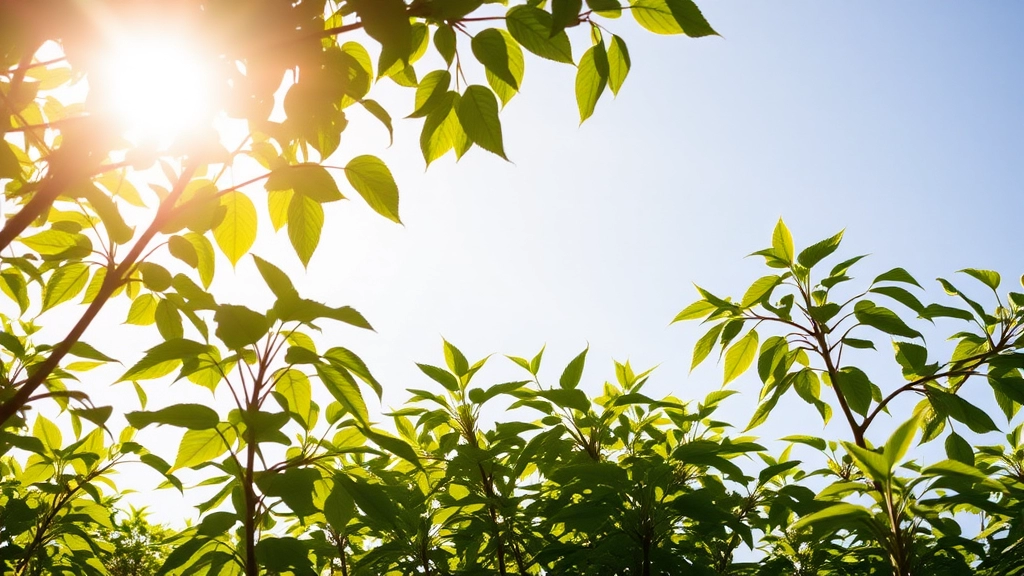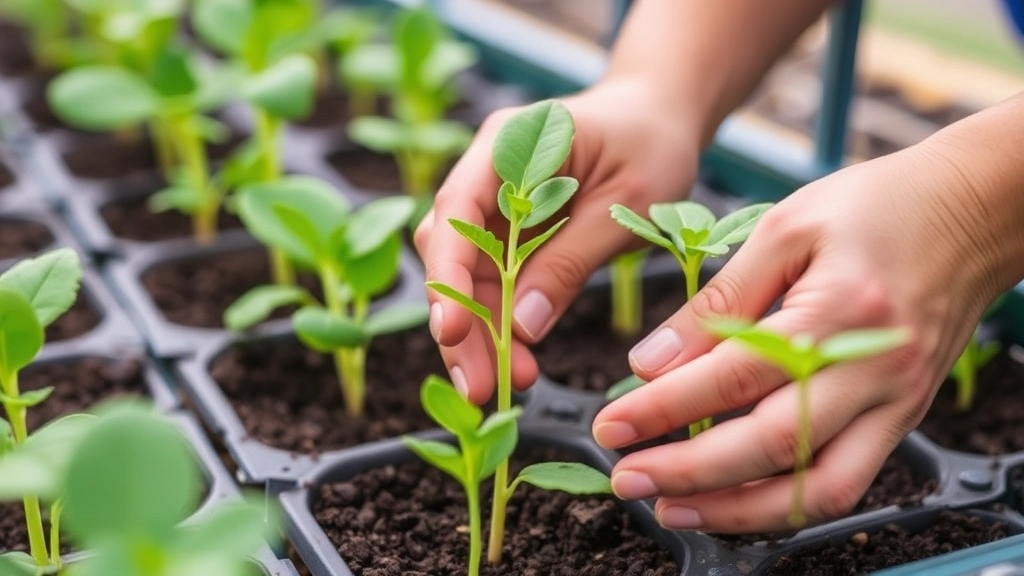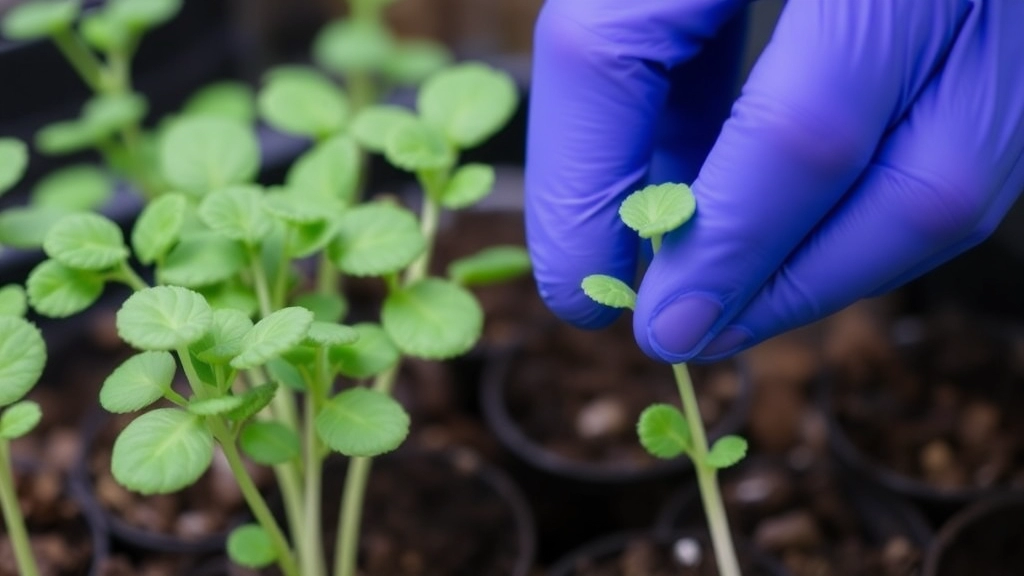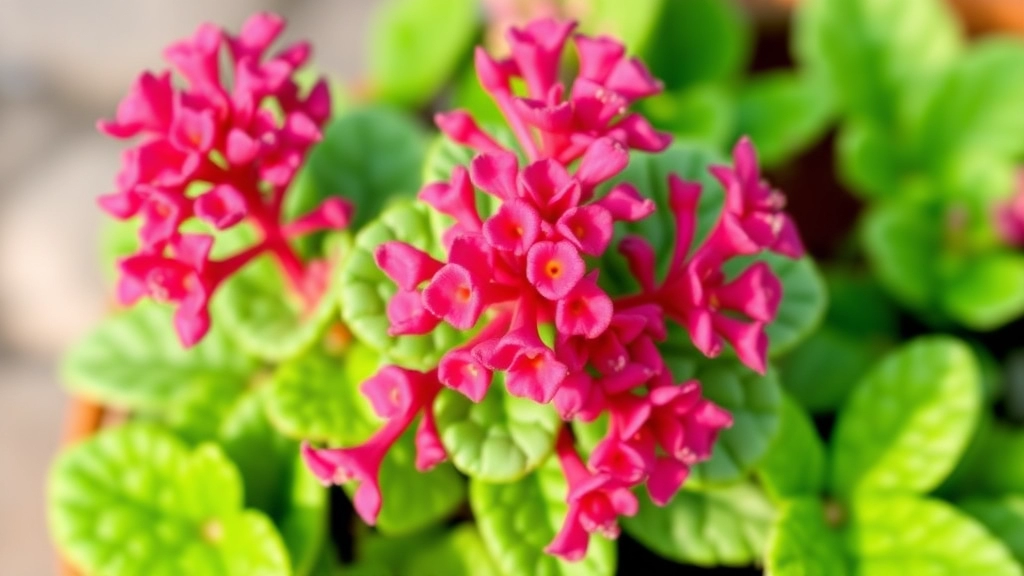Kalanchoe Mother of Millions Plant
The Kalanchoe Mother of Millions Plant, also known as Kalanchoe delagoensis, is a fascinating succulent that’s both easy to grow and potentially invasive. Understanding its care requirements is crucial for maintaining a healthy plant without it taking over your garden.
Care Requirements
To thrive, the Kalanchoe Mother of Millions Plant needs:
- Well-draining soil
- Consistent but moderate watering
- Plenty of sunlight
It’s also essential to manage its growth through regular pruning and be aware of its toxicity to pets and humans. With the right care, this plant can be a stunning addition to your collection.
Growing Conditions for Kalanchoe Mother of Millions
Are you struggling to keep your Kalanchoe Mother of Millions thriving? You’re not alone. Many plant enthusiasts face challenges when it comes to creating the ideal growing conditions for this unique succulent.
Understanding the Basics
Kalanchoe Mother of Millions is known for its resilience and adaptability, but it still requires specific conditions to flourish. Here’s what you need to know:
Proper Soil and Potting Techniques for Kalanchoe Mother of Millions

So, you’ve got your Kalanchoe Mother of Millions and you’re excited to pot it up, right?
But wait, have you thought about the soil?
Getting the right soil mix is crucial for your plant’s health.
Choosing the Right Soil
- Well-Draining Soil: Kalanchoe thrives in soil that drains quickly. Look for a cactus or succulent mix.
- Add Perlite or Sand: Mixing in perlite or coarse sand helps improve drainage. A 70/30 mix of potting soil to perlite works wonders.
- pH Level: Aim for a slightly acidic to neutral pH, around 6.0 to 7.0.
Potting Techniques
- Choose the Right Pot: Go for a pot with drainage holes. This prevents water from sitting at the bottom, which can lead to root rot.
- Size Matters: A pot that’s too big can hold excess moisture. Opt for one that’s just a bit larger than the root ball.
- Layering: Start with a layer of gravel at the bottom for extra drainage, then add your soil mix on top.
Potting Steps
- Remove the Plant: Gently take your Kalanchoe out of its nursery pot.
- Loosen Roots: If the roots are tightly bound, give them a little massage to loosen them up.
- Place in New Pot: Set the plant in the centre of your new pot and fill around it with your soil mix.
- Water Sparingly: After potting, wait a few days before watering to allow any root damage to heal.
Watering Schedule for Optimal Growth
One of the most common concerns for those nurturing Kalanchoe Mother of Millions is finding the right watering schedule. Overwatering can lead to root rot, while underwatering can cause the plant to wilt. Striking the right balance is essential for optimal growth.
Understanding Watering Needs
Kalanchoe Mother of Millions thrives in well-draining soil and prefers to dry out between waterings. Here are some key points to consider:
Light Requirements and Sun Exposure

As we delve deeper into the care of Kalanchoe Mother of Millions, one of the most pressing concerns for many plant enthusiasts is ensuring the right light exposure for optimal growth.
Understanding Light Needs
Kalanchoe Mother of Millions thrives in bright, indirect sunlight.
- Ideal Light Conditions: Aim for 6 hours of indirect sunlight daily.
- Direct Sunlight: While it can tolerate some direct sunlight, too much can scorch the leaves.
- Low Light: Insufficient light may lead to leggy growth and a decline in overall health.
Signs of Proper Light Exposure
How can you tell if your plant is getting the right amount of light?
Look for these indicators:
- Healthy Growth: Compact, upright growth signals adequate light.
- Leaf Colour: Vibrant green leaves indicate a happy plant, while yellowing may suggest too much direct sunlight or insufficient light.
- Flowering: If your Kalanchoe is blooming, it’s likely enjoying its light conditions.
Adjusting Light Exposure
If you notice your plant struggling, consider these adjustments:
- Rotation: Regularly rotate your plant to ensure all sides receive equal light.
- Window Placement: South or west-facing windows are often ideal, but monitor for signs of stress.
- Supplemental Lighting: In darker months, consider using grow lights to maintain healthy growth.
Managing Temperature and Humidity Levels
When caring for your Kalanchoe Mother of Millions, you might wonder how temperature and humidity affect its growth.
Optimal Temperature Range
Kalanchoe thrives in a warm environment. Here are some key points to keep in mind:
- Ideal Temperature: Aim for 20-27°C (68-80°F) during the day.
- Nighttime Temperature: A drop to around 10-15°C (50-59°F) is acceptable.
- Avoid Extremes: Protect your plant from sudden temperature changes, particularly cold drafts or hot air from heaters.
Humidity Preferences
Kalanchoe is quite forgiving when it comes to humidity, but a few guidelines can help:
- Low Humidity: This plant prefers drier air, making it suitable for most indoor environments.
- Avoid High Humidity: High humidity can lead to rot and fungal issues. Keep humidity levels below 50%.
Practical Tips for Managing Conditions
To maintain the ideal temperature and humidity for your Kalanchoe, consider these strategies:
- Location: Place your plant in a well-ventilated area, away from extreme temperature sources.
- Humidity Control: If your home is particularly humid, a dehumidifier can help reduce moisture levels.
- Thermometers and Hygrometers: Investing in these tools can help you monitor conditions effectively.
For more detailed care tips, you may find our Kalanchoe Mother of Millions Care Guide helpful. Additionally, if you’re interested in exploring various Kalanchoe varieties, check out our guide to 150 species of Kalanchoe succulent plants.
Fertilization Tips for Healthy Growth

So, you’ve got your Kalanchoe Mother of Millions thriving, but are you giving it the right nutrients? Fertilization is key to keeping your plant vibrant and healthy. Let’s dive into some straightforward tips that’ll help you nourish your green friend without any fuss.
When to Fertilize:
- Growing Season: The best time to fertilize is during spring and summer when your plant is actively growing.
- Frequency: Aim for every 4-6 weeks. This keeps the nutrients flowing without overwhelming your plant.
Choosing the Right Fertilizer:
- Balanced Fertilizer: Look for a balanced, water-soluble fertilizer with an N-P-K ratio of around 10-10-10. This gives your Kalanchoe a good mix of nitrogen, phosphorus, and potassium.
- Dilution is Key: Always dilute the fertilizer to half the recommended strength. Too much can burn those lovely leaves!
Application Tips:
- Water First: Before applying fertilizer, give your plant a good drink. This helps prevent root burn.
- Even Distribution: Pour the diluted fertilizer evenly around the base of the plant, avoiding direct contact with the leaves.
Signs Your Plant Needs More Nutrients:
- Pale Leaves: If the leaves are looking a bit washed out, it might be time to feed them.
- Stunted Growth: If your plant isn’t growing as expected, a little boost could do wonders.
Remember, less is often more when it comes to fertilizing. Overdoing it can lead to more harm than good.
Pruning and Controlling Growth
As we delve into the care of your Kalanchoe Mother of Millions, it’s essential to discuss pruning and controlling growth. Many plant enthusiasts worry about their Kalanchoe becoming unruly or outgrowing its space.
Why Prune?
Pruning serves multiple purposes:
- Encourages Healthy Growth: By removing dead or damaged leaves, you promote new growth.
- Controls Size: It helps keep your plant at a manageable size.
- Enhances Appearance: A well-pruned Kalanchoe looks more vibrant and aesthetically pleasing.
When to Prune
The best time to prune your Kalanchoe is during the growing season, typically in spring or early summer. This timing allows the plant to recover quickly and encourages new growth.
How to Prune
Follow these simple steps for effective pruning:
- Gather Your Tools: Use clean, sharp scissors or pruning shears.
- Identify Problem Areas: Look for dead, yellowing, or overgrown leaves.
- Make Clean Cuts: Cut just above a leaf node to encourage new growth.
- Remove Offsets: If your plant has produced offsets (baby plants), gently detach them to promote airflow and reduce crowding.
Controlling Growth
To keep your Kalanchoe in check, consider these tips:
- Repot Regularly: Every couple of years, repot your plant to refresh the soil and give it more space.
- Limit Fertilizer: Over-fertilising can lead to excessive growth. Use a balanced fertiliser sparingly.
- Monitor Light Exposure: Too much direct sunlight can cause leggy growth. Ensure it receives bright, indirect light.
For more detailed guidance on maintaining a healthy Kalanchoe, check out our ultimate guide to Kalanchoe care and our tips on fixing etiolated Kalanchoe.
Common Pests and How to Treat Them

So, you’ve got your Kalanchoe Mother of Millions thriving, but what happens when those pesky pests show up?
Identifying Common Pests
First off, let’s talk about the usual suspects:
- Aphids: Tiny, green or black bugs that suck the sap from your plant.
- Mealybugs: White, cottony blobs that cling to leaves and stems.
- Spider Mites: Tiny red or brown dots that create fine webs on the leaves.
- Scale Insects: Hard, shell-like pests that attach themselves to stems and leaves.
These little guys can stress your plant and stunt its growth, so it’s crucial to keep an eye out for them.
Treatment Options
Now, let’s get into how you can tackle these uninvited guests:
- Aphids: Spray them off with a strong jet of water. If they persist, try insecticidal soap.
- Mealybugs: Dab them with a cotton swab dipped in rubbing alcohol. It’s surprisingly effective!
- Spider Mites: Increase humidity around the plant and wipe the leaves with a damp cloth. If they’re still hanging around, neem oil works wonders.
- Scale Insects: Scrape them off gently with your fingernail or a soft brush. For severe infestations, insecticidal soap is your best bet.
Prevention Tips
To keep these pests at bay:
- Regular Inspections: Check your plants weekly. Catching pests early makes a world of difference.
- Clean Your Leaves: Wipe down leaves with a damp cloth to remove dust and deter pests.
- Healthy Plants: A well-cared-for plant is less likely to attract pests.
Toxicity Concerns for Pets and Humans
As we delve deeper into caring for your Kalanchoe Mother of Millions, it’s essential to address a crucial concern: toxicity. Many plant enthusiasts may not be aware that this beautiful succulent can pose risks to both pets and humans.
Understanding the Risks
Kalanchoe species, including the Mother of Millions, contain compounds that can be harmful if ingested.
- For Pets:
- Dogs and cats may experience symptoms such as vomiting, diarrhea, and lethargy. Learn more about protecting your pets from Kalanchoe toxicity.
- In severe cases, ingestion can lead to more serious health issues.
- For Humans:
- While not typically life-threatening, consuming parts of the plant can cause gastrointestinal discomfort. Children are particularly at risk, so keep plants out of reach. For more information on safety, check out our safety guide for Kalanchoe plants.
Safety Measures
To ensure a safe environment for your loved ones, consider the following tips:
- Placement:
- Keep your Kalanchoe out of reach of pets and children.
- Education:
- Inform family and friends about the plant’s toxicity. Knowledge is key.
- Monitoring:
- Regularly check for any signs of distress in pets if they have access to the plant.
Propagation Techniques Using Plantlets

So, you’re loving your Kalanchoe Mother of Millions and want to share the joy?
You’re in luck! This plant is a superstar when it comes to propagation, and it’s super easy to do.
Why Plantlets?
Kalanchoe Mother of Millions produces tiny plantlets along its leaf edges, making it a breeze to propagate. Here’s how to do it:
- Identify the Plantlets: Look for those little green babies sprouting from the leaves. They’re usually ready to be snipped off when they’re about an inch tall.
- Gather Your Tools: You’ll need:
- A clean, sharp pair of scissors or shears
- A small pot with drainage holes
- Well-draining soil (like cactus mix)
- Cutting the Plantlets: Gently twist or cut the plantlets from the leaf. Make sure you get a bit of the stem attached.
- Prepare the Pot: Fill your pot with the well-draining soil. You want to make sure it’s nice and loose to allow for good airflow.
- Planting the Cuttings: Place the plantlets on top of the soil and lightly press them in. You don’t need to bury them too deep; just enough to keep them steady.
- Watering: Give them a light misting to settle them in. Avoid soaking the soil; we don’t want them to rot!
- Creating the Right Environment: Keep your new cuttings in a warm, bright spot but out of direct sunlight for a few days. This helps them adjust without getting scorched.
- Watch Them Grow: In a few weeks, you’ll notice roots forming, and soon enough, you’ll have new plants ready to thrive!
A Quick Tip: Don’t forget to label your pots if you’re propagating multiple varieties. It’s easy to mix them up!
Overwintering and Seasonal Care for Kalanchoe Mother of Millions
As we transition into the colder months, many plant enthusiasts wonder how to best care for their Kalanchoe Mother of Millions.
Understanding Overwintering Needs
Overwintering is essential for ensuring your plant remains healthy and vibrant during the winter. Here are some key considerations:
FAQs on Kalanchoe Mother Of Millions Plant
What type of soil is best for Kalanchoe Mother Of Millions?
The plant thrives in well-draining soil. A cactus or succulent mix is ideal. Adding perlite or coarse sand can further improve drainage. Aim for a slightly acidic to neutral pH, around 6.0 to 7.0.
What kind of pot should I use for my Kalanchoe Mother Of Millions?
Choose a pot with drainage holes to prevent water from sitting at the bottom, which can lead to root rot. Also, opt for a pot that’s just a bit larger than the root ball to avoid excess moisture retention.
How much sunlight does Kalanchoe Mother Of Millions need?
The plant thrives in bright, indirect sunlight. Aim for about 6 hours of indirect sunlight daily. While it can tolerate some direct sunlight, too much can scorch the leaves.
How often should I fertilize my Kalanchoe Mother Of Millions?
Fertilize during the growing season, which is spring and summer, every 4-6 weeks. Use a balanced, water-soluble fertilizer with an N-P-K ratio of around 10-10-10, diluted to half the recommended strength.
What are common pests that affect Kalanchoe Mother Of Millions and how do I treat them?
Common pests include aphids, mealybugs, spider mites, and scale insects. Treatments include spraying aphids with water, dabbing mealybugs with rubbing alcohol, increasing humidity for spider mites, and scraping off scale insects. Insecticidal soap can also be effective.
How do I propagate Kalanchoe Mother Of Millions?
The plant produces tiny plantlets along its leaf edges, making it easy to propagate. Gently twist or cut the plantlets from the leaf, prepare a pot with well-draining soil, and place the plantlets on top of the soil. Keep them in a warm, bright spot but out of direct sunlight for a few days.
What are the signs that my Kalanchoe Mother Of Millions is getting the right amount of light?
Indicators of proper light exposure include compact, upright growth, vibrant green leaves, and blooming flowers. Yellowing leaves may suggest too much direct sunlight or insufficient light.
What should I do if my Kalanchoe Mother Of Millions shows signs of nutrient deficiency?
If the leaves appear pale or the plant exhibits stunted growth, it might be time to fertilize. Ensure you are using a balanced fertilizer and following the recommended application tips.
How can I prevent pest infestations on my Kalanchoe Mother Of Millions?
Regularly inspect your plants, wipe down leaves with a damp cloth, and maintain overall plant health. Healthy plants are less likely to attract pests.
Can I use grow lights for my Kalanchoe Mother Of Millions?
Yes, during darker months or if your plant isn’t receiving enough natural light, using grow lights can help maintain healthy growth.
References
-
The Spruce – Growing Kalanchoe Indoors
-
Gardener’s World – How to Grow Kalanchoe
-
The Old Farmer’s Almanac – Kalanchoe
